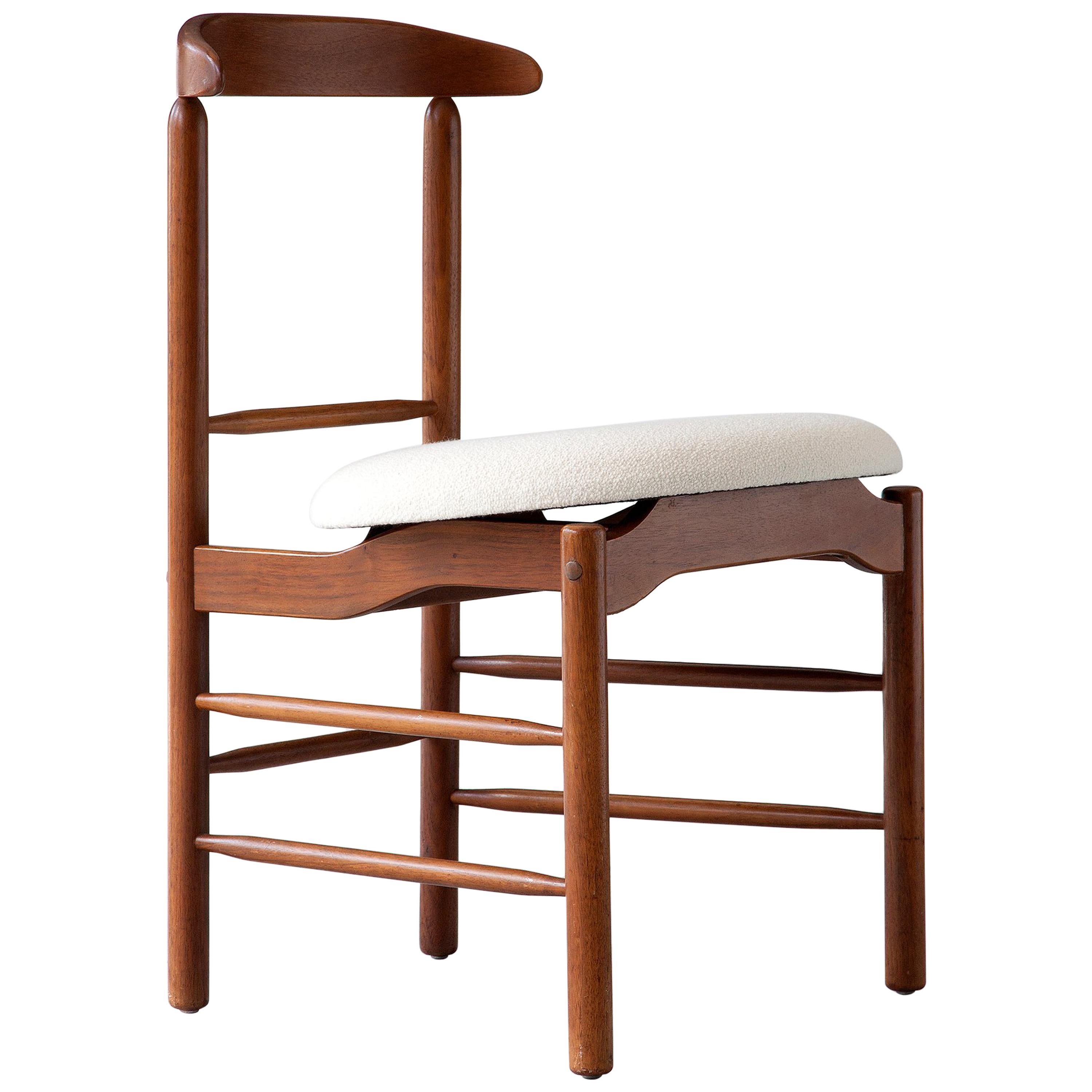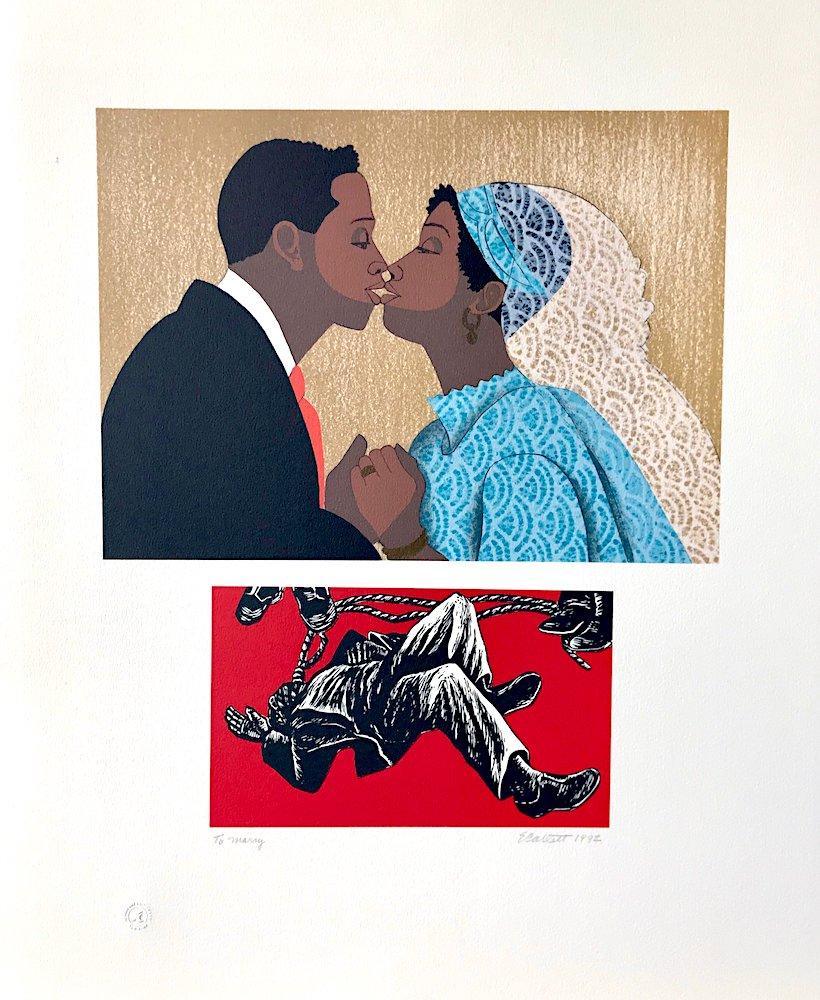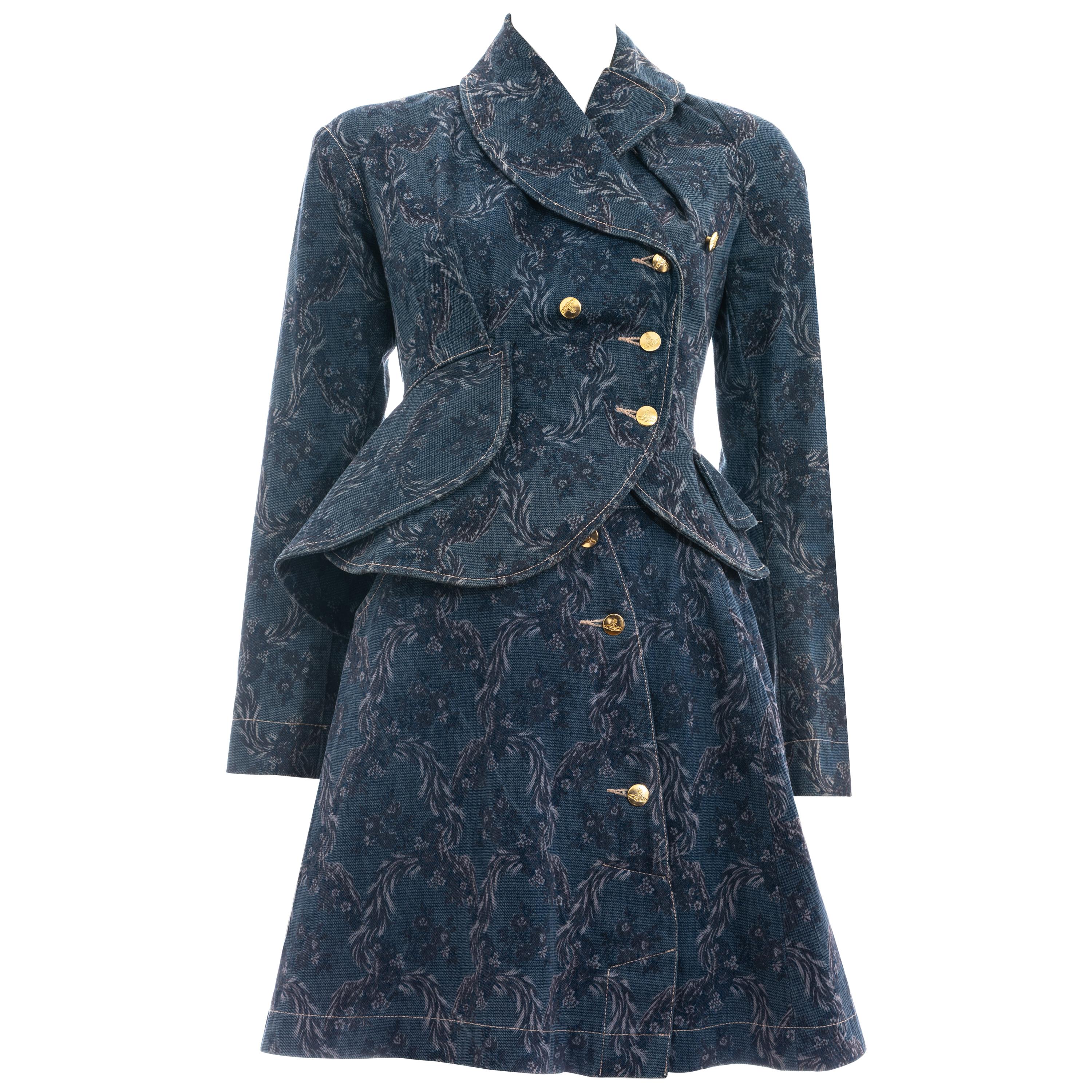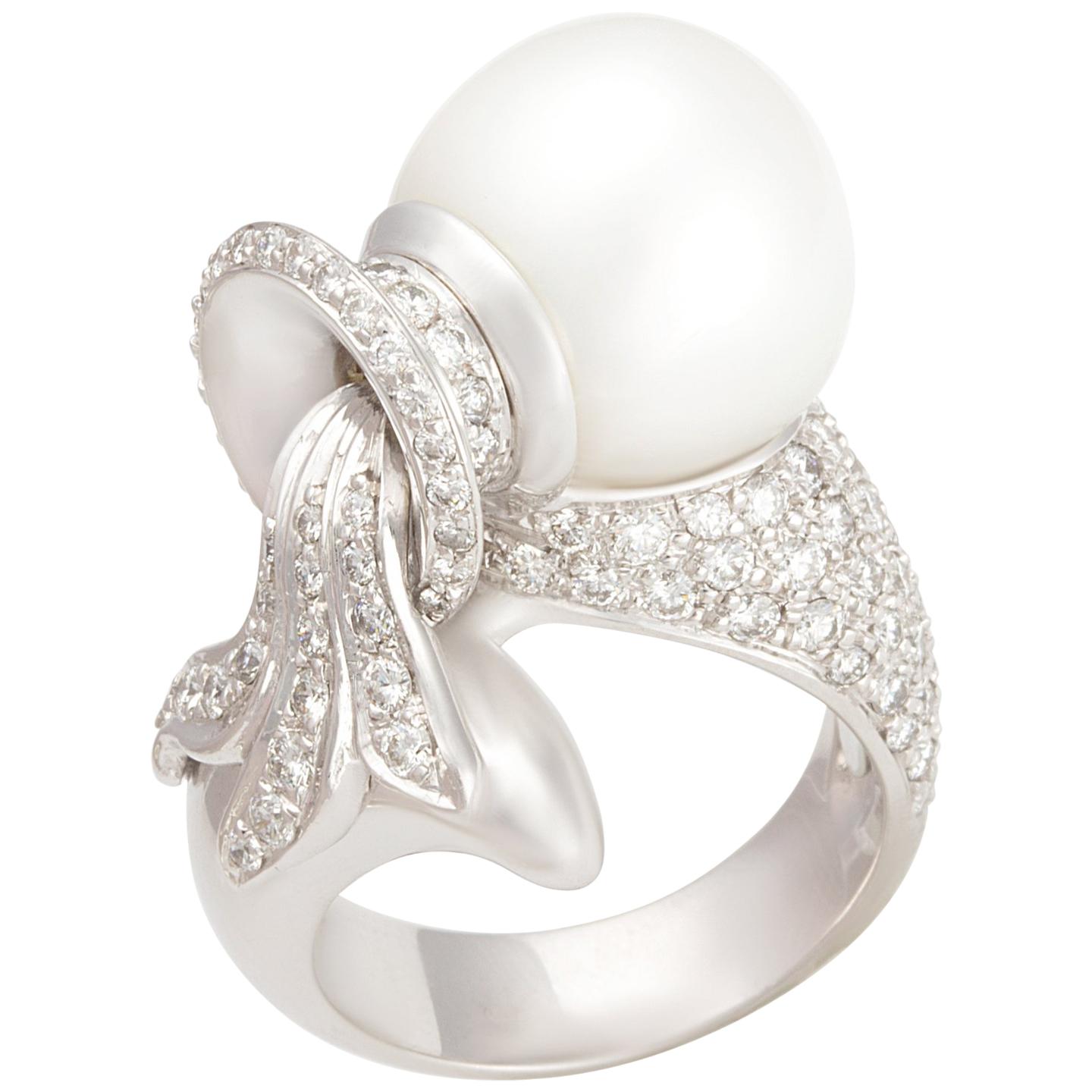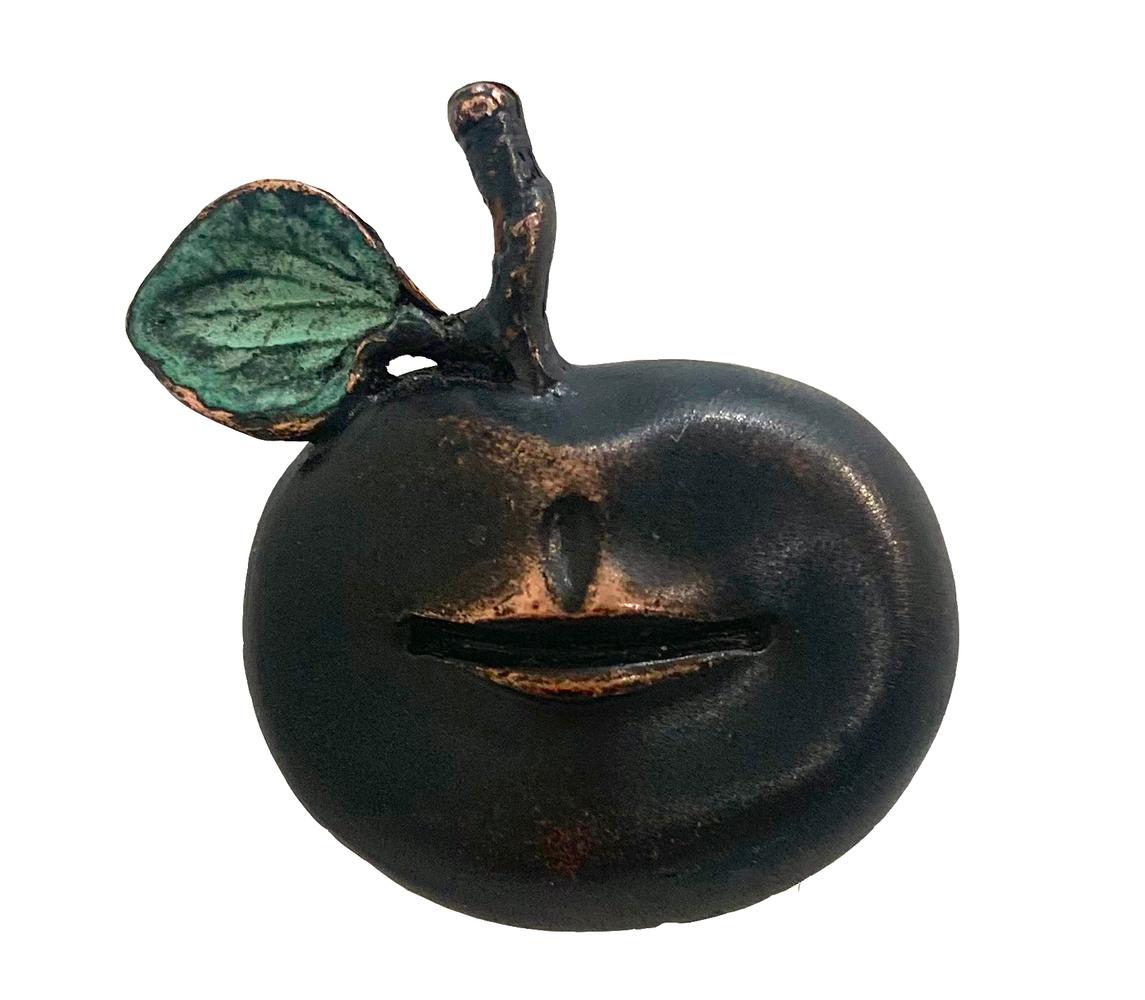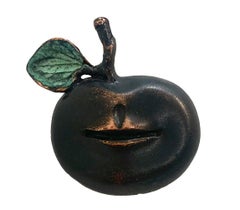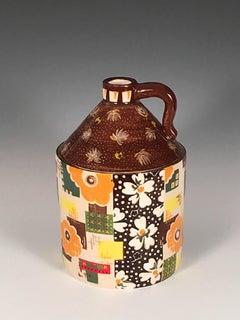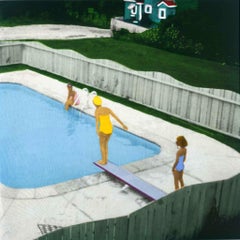Women's History Month
Handpicked by Tory Burch
Shop a selection of pieces by female artists and makers curated exclusively for 1stDibs by the iconic fashion designer.
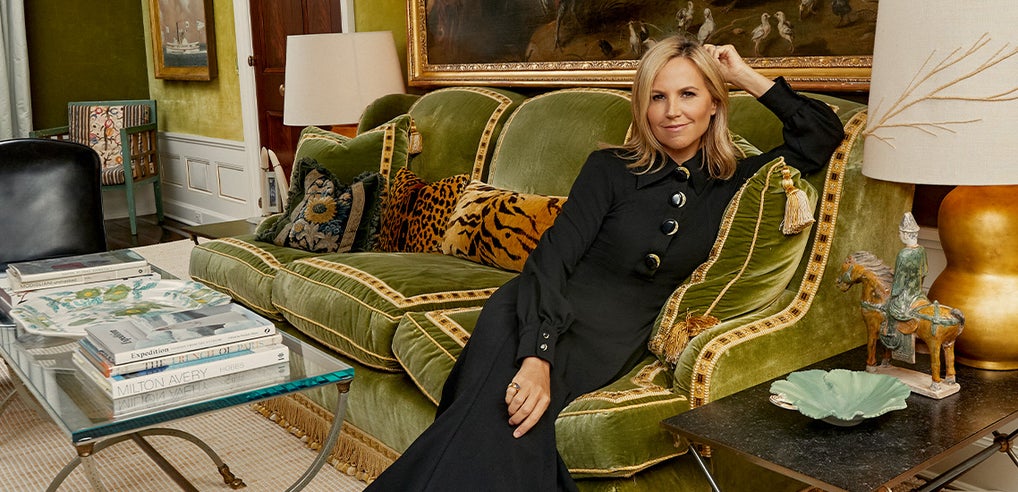
to
2
1
Overall Width
to
Overall Height
to
1
2
1
1
1
1
1
1
1
1
1
1
1
1
1
1
1
1
1
1
1
2
1
Pomme Bouche, Brooch, Claude Lalanne, French, Design, 1990's, Bronze, Jewels
By Claude Lalanne
Located in Geneva, CH
Pomme Bouche, Brooch, Claude Lalanne, French, Design, 1990's, Bronze, Jewels
Brooch Pomme Bouche
1990
Edition Arthus-bertrand, Paris
Bronze with a golden...
Category
1990s Art Nouveau Women's History Month
Materials
Bronze
Vintage Rust Whiskey Jug
By Rachel Hubbard Kline
Located in Kansas City, MO
Artist: Rachel Hubbard Kline
Title : Vintage Rust Whiskey Jug
Materials : Stoneware, underglaze, glaze, decals, luster
Date : 2017
Dimensions : 8.5" x 4.75...
Category
2010s Contemporary Women's History Month
Materials
Ceramic, Clay, Luster, Stoneware, Glaze, Underglaze
Yellow Suit Bather
By Isca Greenfield-Sanders
Located in San Francisco, CA
Isca Greenfield-Sanders
Yellow Suit Bather, 2006
Color aquatint etching
Plate: 21 x 21 inches; Sheet: 32 x 31 1/4 inches
Edition of 50
Category
Early 2000s Women's History Month
Materials
Aquatint
Related Items
Untitled (Fantastic Scene)
By Michael Bowen
Located in San Francisco, CA
This artwork "Untitled, Fantastic Scene" c.1975 is an original color etching with aquatint on wove paper by American surrealist artist Michael Bowen, 1937-2009. It is hand signed in pencil by the artist. The plate mark (image) size is 14.85 x 18 inches, sheet size is 21.5 x 26 inches. It is in excellent condition, has never been framed.
About the subject:
Nowhere is the intertwining of metaphysical, biographic and social narratives more evident than in the Café Life series painted in the 1980’s. Though the “series” was done in the 80’s, the pieces really revive the spirit of the Beat café scene, which began in the mid-1950’s and which was so instrumental to the particular spiritual and social vibe of the counter culture. And his Café Life observations continue over his artist life with scenes, such as the ones here, from Los Angles, Bolinas, Mexico and Italy.
About the artist:
Michael Bowen (December 8, 1937 – March 7, 2009) was an American fine artist known as one of the co-founders of the late 20th and 21st century Visionary art movements. His works include paintings on canvas and paper, 92 intaglio etchings based on Jungian psychology, assemblage, bronze sculpture, collage, and handmade art books. An icon of the American Beat Generation and the 1960s counterculture, Bowen is also known for his role in inspiring and organizing the first Human Be-In in San Francisco. Chronicled in books and periodicals reflecting on the turbulent 1960s, Bowen's historical impact on both the literary and visual art worlds is well documented. He remains influential among avant-garde art circles around the world. He started his art career at age 17, when he joined the American installation artist Ed Kienholz in his Los Angeles studio. There he met and joined with other influential Beat Generation artists including Wallace Berman, John Altoon, and Dennis Hopper. Bowen participated in the construction of the Ferus Gallery and Now Gallery created by Ed Kienholz and curated by Walter Hopps. Bowen attended the Chouinard Art Institute for several years during his formative artistic experiences in Los Angeles. In the late 50s and early 60s, Bowen continued his spiritual training and research. He investigated and practiced a variety of occult topics, Eastern philosophies, and mysticism, and his artwork reflected these themes. Bowen is often referred to as a mystic artist. As a lifelong student of the Bhagavad-Gita, Bowen's entire career has emulated the spiritual warrior archetype of Arjuna, fighting for the Bill of Rights of the United States Constitution. Michael Bowen moved to San Francisco in the late 1950s, and along with fellow artist comrades Arthur Monroe...
Category
Late 20th Century Surrealist Women's History Month
Materials
Etching, Aquatint
Double Faces, Variant #1
By Michael Bowen
Located in San Francisco, CA
This artwork titled "Double Faces" c.1975 is an original color etching with aquatint on wove paper by American surrealist artist Michael Bowen, 1937-2009. It is hand signed with initials in pencil by the artist. The plate mark (image) size is 21.75 x 17.5 inches, sheet size is 29.25 x 20.75 inches. It is in excellent condition, has never been framed.
About the subject:
Nowhere is the intertwining of metaphysical, biographic and social narratives more evident than in the Café Life series painted in the 1980’s. Though the “series” was done in the 80’s, the pieces really revive the spirit of the Beat café scene, which began in the mid-1950’s and which was so instrumental to the particular spiritual and social vibe of the counter culture. And his Café Life observations continue over his artist life with scenes, such as the ones here, from Los Angles, Bolinas, Mexico and Italy.
About the artist:
Michael Bowen (December 8, 1937 – March 7, 2009) was an American fine artist known as one of the co-founders of the late 20th and 21st century Visionary art movements. His works include paintings on canvas and paper, 92 intaglio etchings based on Jungian psychology, assemblage, bronze sculpture, collage, and handmade art books. An icon of the American Beat Generation and the 1960s counterculture, Bowen is also known for his role in inspiring and organizing the first Human Be-In in San Francisco. Chronicled in books and periodicals reflecting on the turbulent 1960s, Bowen's historical impact on both the literary and visual art worlds is well documented. He remains influential among avant-garde art circles around the world. He started his art career at age 17, when he joined the American installation artist Ed Kienholz in his Los Angeles studio. There he met and joined with other influential Beat Generation artists including Wallace Berman, John Altoon, and Dennis Hopper. Bowen participated in the construction of the Ferus Gallery and Now Gallery created by Ed Kienholz and curated by Walter Hopps. Bowen attended the Chouinard Art Institute for several years during his formative artistic experiences in Los Angeles. In the late 50s and early 60s, Bowen continued his spiritual training and research. He investigated and practiced a variety of occult topics, Eastern philosophies, and mysticism, and his artwork reflected these themes. Bowen is often referred to as a mystic artist. As a lifelong student of the Bhagavad-Gita, Bowen's entire career has emulated the spiritual warrior archetype of Arjuna, fighting for the Bill of Rights of the United States Constitution. Michael Bowen moved to San Francisco in the late 1950s, and along with fellow artist comrades Arthur Monroe...
Category
Late 20th Century Surrealist Women's History Month
Materials
Etching, Aquatint
Gold Gilt Bronze Sculpture Pendant Israeli Tumarkin Abstract Modernist Jewelry
Located in Surfside, FL
Measures about 4.25 X 2.25 inches. Box frame is 17 X 13 inches. Signed by artist verso. From the literature that I have seen I believe the edition size was limited to 10, I do not kn...
Category
1960s Modern Women's History Month
Materials
Gold, Bronze
Margit Smiles
By Alex Katz
Located in New York, NY
signed and numbered lower image
edition 7/40
Catalogue raisonné 00269
Internationally recognized painter and printmaker Alex Katz was born in 1927 in Brooklyn, New York. Over a thir...
Category
1990s Contemporary Women's History Month
Materials
Aquatint
Abstract Skyscrapers, Aquatint Etching by Martha Diamond
By Martha Diamond
Located in Long Island City, NY
Martha Diamond (1944-2023) was a Contemporary American painter best known for cityscape abstractions in sweeping, gestural brush strokes. Skyscrapers is...
Category
1980s Abstract Impressionist Women's History Month
Materials
Aquatint
Untitled (Horses)
By Laura Owens
Located in New York, NY
Los Angeles-based artist, Laura Owens' horse prints often incorporate her characteristic style, which challenges traditional assumptions about figuration and abstraction . Her work f...
Category
Early 2000s Contemporary Women's History Month
Materials
Etching, Aquatint
My favorite moment.., Porcelain Cup with Sgraffito Detailing
Located in Miami Beach, FL
This cup is one of 48 that make up the installation, “Fragments of Our Love Story.” These cups feature feminine forms which recall the Venus of Willendorf and other historical fertil...
Category
2010s Modern Women's History Month
Materials
Ceramic, Clay, Porcelain, Paint, Underglaze
Donald Baechler Szechuan Garden 2003 (Donald Baechler prints)
By Donald Baechler
Located in NEW YORK, NY
Donald Baechler, Szechuan Garden, 2003:
Medium: Aquatint and soft-ground etching.
Sheet size: 27 x 34 inches.
Edition of 35 (30 + 5 artists proofs).
Hand-signed, dated and numbered on bottom of sheet.
Printed on Hanhnemuhle paper.
Unframed.
Acquired directly from publisher.
Artist Biography:
Donald Baechler, a member of the East Village art scene in 1980s New York, is known for his painting-collage-drawing works depicting of childhood imagery and nostalgic ephemera like grammar school primers, old maps, and children’s drawings...
Category
21st Century and Contemporary Pop Art Women's History Month
Materials
Etching, Aquatint
Ceramic Foo Dogs: 'Guardian Dogs'
By Kenjiro Kitade
Located in New York, NY
Guardians of temples or shrines placed on each side of entrance, believed to ward off Evil Spirit’s. They look Angry, but not at You.
They are Protecting you from Bad Spirits!
The m...
Category
2010s Contemporary Women's History Month
Materials
Clay, Glaze, Underglaze
"Selfie" , Surrealistic Stoneware Sculpture with Glaze and Underglaze
By Chris Riccardo
Located in St. Louis, MO
"My process begins with a thought, a vision, a look, a trigger that draws me to the clay. Gone are the days of exhaustive preliminary sketches and maquettes, I simply visualize how I...
Category
2010s Contemporary Women's History Month
Materials
Ceramic, Stoneware, Glaze, Underglaze
The weight of your head.…", Porcelain Cup with Sgraffito Detailing
Located in Miami Beach, FL
This cup is one of 48 that make up the installation, “Fragments of Our Love Story.” These cups feature feminine forms which recall the Venus of Willendorf and other historical fertil...
Category
2010s Modern Women's History Month
Materials
Ceramic, Clay, Porcelain, Paint, Underglaze
Vintage Abstract Expressionist Ibram Lassaw Modernist Bronze Sculpture Pendant
By Ibram Lassaw
Located in Surfside, FL
IBRAM LASSAW
(Russian-American, 1913-2003),
Sculptural pendant
Gold plated bronze
Signed verso
Measurements: 2-7/8''h, 2-1/4''w.
Ibram Lassaw was born in Alexandria, Egypt, of Russian Jewish émigré parents. After briefly living in Marseille, France, Naples, Italy Tunis, Malta, and Constantinople, Turkey his family settled in Brooklyn, New York, in 1921.His family settled in Brooklyn, New York. He became a US citizen in 1928. Ibram Lassaw, one of America's first abstract sculptors, was best known for his open-space welded sculptures of bronze, silver, copper and steel. Drawing from Surrealism, Constructivism, and Cubism, Lassaw pioneered an innovative welding technique that allowed him to create dynamic, intricate, and expressive works in three dimensions. As a result, he was a key force in shaping New York School sculpture.He first studied sculpture in 1926 at the Clay Club and later at the Beaux-Arts Institute of Design in New York. He made abstract paintings and drawings influenced by Kandinsky, Sophie Taeuber Arp, and other artists. He also attended the City College of New York. Lassaw’s encounter with avant-garde art in the International Exhibition of Modern Art (1926), organized by the Société Anonyme at the Brooklyn Museum, made a powerful impression on him. In the early 1930s he explored new materials and notions of open-space sculpture. The ideas of László Moholy-Nagy and Buckminster Fuller were important to him, and he knew the work of Julio González, Pablo Picasso, and the Russian Constructivists. After experimenting with plaster, rubber and wire, Lassaw began working with steel, which became a frequent medium for the artist, along with other metals. His work reflects the influence of Surrealist artists such as Alberto Giacometti and Joan Miro as well as American Modernist Alexander Calder.A pioneer of abstract sculpture in the United States, in 1936 Lassaw was a founding member of the organization American Abstract Artists. Between 1933 and 1942 he worked for various federal arts projects: the Public Works of Art Project, Civil Works Authority, and WPA, the Works Progress Administration Federal Art Project. In 1938 he produced his first welded work. He served with the U.S. Army, where he learned direct welding techniques. During the 1940s he experimented with cage constructions and with acrylic plastics, adding color to his sculptures by applying dye directly to their surfaces. In 1949 Lassaw was a founder of the Club, an informal discussion group of avant-garde artists that had developed from gatherings at his studio, on Eighth Street.
During the mid-1930s, Lassaw worked briefly for the Public Works of Art Project cleaning sculptural monuments around New York City. He subsequently joined the WPA as a teacher and sculptor until he was drafted into the army in 1942. Lassaw's contribution to the advancement of sculptural abstraction went beyond mere formal innovation; his promotion of modernist styles during the 1930s did much to insure the growth of abstract art in the United States. He was one of the founding members of the American Abstract Artists group, and served as president of the American Abstract Artists organization from 1946 to 1949. In 1951, Samuel Kootz invited Lassaw to join his gallery in New York. He also had a summer gallery in Provincetown, MA. Lassaw had been summering in Provincetown since 1944, and in 1951 rented an apartment next door to the Kootz Gallery. Among the artists in the Kootz Gallery were Jean Arp, William Baziotes, Georges Braque, Jean Dubuffet, Herbert Ferber, Arshile Gorky, Adolph Gottlieb, David Hare, Hans Hofmann, Fernand Leger, Georges Mathieu, Joan Miró, Robert Motherwell, Pablo Picasso, Pierre Soulages, and Maurice de Vlaminck. Lassaw is a sculptor who was a part of the New York School of Abstract expressionism during the 1940s and 1950s. Jackson Pollock, Lee Krasner, James Brooks, Willem de Kooning, and several other artists like Lassaw spent summers on the Southern Shore of Long Island. Lassaw spent summers on Long Island from 1955 until he moved there permanently in 1963.
SELECT EXHIBITIONS
1961 International Exhibition of Modern Jewelry 1890–1961, organized by the Worshipful Company of Goldsmiths in association with the Victoria and Albert Museum, London
1967 Exhibition of Jewelry by Painters and Sculptors, organized for circulation by MoMA
1973 Jewelry...
Category
Mid-20th Century Abstract Expressionist Women's History Month
Materials
Gold, Bronze
